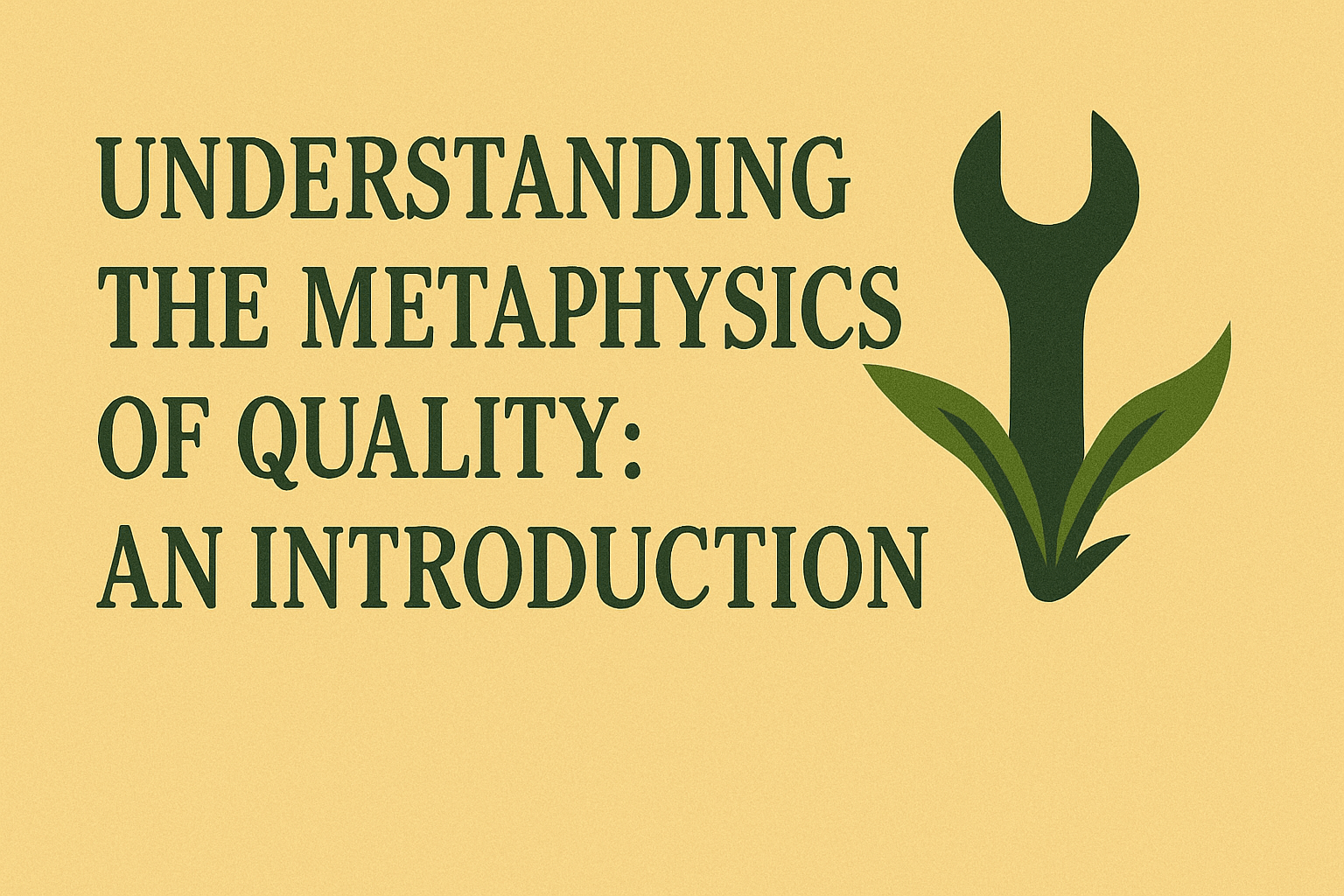An introductory article explaining the core concepts of the Metaphysics of Quality, including the division between static and dynamic quality, and how Pirsig differentiates between classic and romantic understandings of reality.
Introduction
Robert M. Pirsig’s “Metaphysics of Quality” (MOQ) is a philosophical framework introduced in his acclaimed novels Zen and the Art of Motorcycle Maintenance and Lila: An Inquiry into Morals. This unique approach to understanding reality and value goes beyond traditional dichotomies of subject and object, providing a fresh perspective on how we perceive and interact with the world. In this introductory article, we will explore the core concepts of the Metaphysics of Quality, including the distinction between static and dynamic quality, and how Pirsig differentiates between classic and romantic understandings of reality.
Core Concepts of the Metaphysics of Quality
At its essence, the Metaphysics of Quality proposes that quality is the fundamental building block of the universe. Rather than seeing reality as composed of subjects and objects, Pirsig posits that everything can be understood in terms of quality. Quality, in Pirsig’s view, is not merely a measure of excellence or superiority but is an intrinsic part of existence itself.
Static and Dynamic Quality
Pirsig divides quality into two interrelated categories: static quality and dynamic quality. Understanding these two types of quality is crucial to grasping the Metaphysics of Quality.
- Static Quality: Static quality refers to the stable, ordered, and structured aspects of reality. It encompasses the norms, traditions, and patterns that provide continuity and consistency in our lives. Static quality is essential for maintaining order and preserving cultural and societal structures. It includes the rules, laws, and established practices that define various aspects of existence, from social institutions to scientific laws.
- Dynamic Quality: Dynamic quality, on the other hand, represents the changing, spontaneous, and innovative aspects of reality. It is the force of creativity and change that drives evolution and progress. Dynamic quality is seen in moments of artistic inspiration, scientific breakthroughs, and personal insights. It disrupts the status quo, bringing new possibilities and advancements.
The interplay between static and dynamic quality is a central theme in Pirsig’s philosophy. While static quality provides stability and structure, dynamic quality ensures growth and transformation. Both are necessary for a balanced and thriving existence.
Classic and Romantic Understandings of Reality
In Zen and the Art of Motorcycle Maintenance, Pirsig also introduces the concepts of classic and romantic understandings of reality. These two modes of perception reflect different ways of experiencing and valuing the world.
- Classic Understanding: The classic mode of understanding is analytical, logical, and objective. It focuses on the underlying form, structure, and function of things. This approach is exemplified by scientific and technical thinking, where understanding comes from breaking down and examining the components of a system. In the context of motorcycle maintenance, the classic approach involves understanding the mechanical workings and precise engineering of the machine.
- Romantic Understanding: The romantic mode of understanding is intuitive, aesthetic, and subjective. It emphasizes the immediate experience and emotional connection with the world. This perspective values beauty, creativity, and the holistic appreciation of things. For instance, a romantic approach to a motorcycle would involve appreciating its design, the feeling of riding it, and the freedom it represents.
Pirsig argues that both classic and romantic understandings are valid and necessary. The Metaphysics of Quality seeks to bridge the gap between these two modes of perception, showing that they are not mutually exclusive but rather complementary ways of engaging with reality.
The Significance of the Metaphysics of Quality
The Metaphysics of Quality offers a profound shift in how we think about value and existence. By placing quality at the center of our understanding, Pirsig challenges the conventional subject-object dichotomy and invites us to see the world through a more integrated and holistic lens. This perspective encourages us to recognize the importance of both stability and change, order and creativity, analysis and intuition.
In practical terms, the Metaphysics of Quality can inspire a more balanced approach to life. It suggests that we should strive to maintain the structures and traditions that provide stability while remaining open to innovation and transformation. It also encourages us to appreciate both the technical and aesthetic aspects of our experiences, finding value in the intricate details as well as the overall beauty.
Conclusion
In conclusion, Robert Pirsig’s Metaphysics of Quality provides a compelling framework for understanding the complex interplay of values in our lives. By exploring the concepts of static and dynamic quality, and classic and romantic understandings of reality, we can gain a deeper appreciation for the richness and diversity of human experience. This philosophical approach not only enriches our intellectual understanding but also offers practical guidance for living a more balanced and meaningful life.
